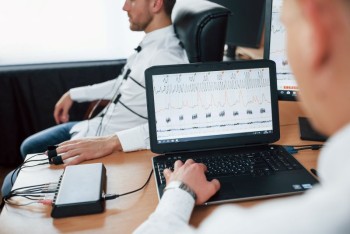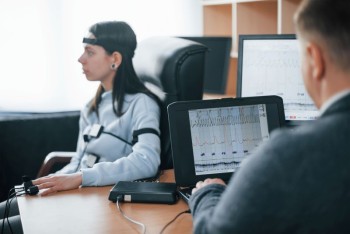
Electromyography (EMG) is a crucial diagnostic tool in the medical field that analyzes the electrical activity of muscles.
Electromyography (EMG) & NCV Four Limbs in India with Cost
Electromyography (EMG) & NCV Four Limbs in Detail
Introduction to Electromyography (EMG)
Electromyography (EMG) is a crucial diagnostic tool in the medical field that analyzes the electrical activity of muscles. This non-invasive procedure involves the placement of electrodes on the skin or directly into muscles to detect and record the electrical signals generated during muscle contraction. The information obtained from EMG tests is invaluable for understanding muscle function and diagnosing various medical conditions.
How EMG Works
The process of EMG involves the precise placement of electrodes over specific muscles or insertion of fine needles directly into muscles. These electrodes then capture the electrical impulses produced by muscle fibers during contraction. By analyzing these signals, healthcare professionals gain insights into the health and functioning of muscles and nerves.
Applications of EMG in Diagnostics
EMG plays a pivotal role in the detection of neuromuscular disorders, such as muscular dystrophy, myasthenia gravis, and amyotrophic lateral sclerosis (ALS). Additionally, it is instrumental in monitoring muscle activity during surgeries, ensuring the preservation of critical nerves and preventing postoperative complications.
Types of EMG
There are two primary types of EMG: Surface EMG and Intramuscular EMG. Surface EMG involves placing electrodes on the skin's surface, suitable for detecting general muscle activity. In contrast, Intramuscular EMG uses fine needles inserted directly into muscles, providing more detailed information about specific muscle groups.
EMG in Neurology
In neurology, EMG is a valuable tool for identifying and diagnosing various neurological disorders. It aids in evaluating nerve damage, detecting abnormalities in nerve conduction, and determining the severity of conditions affecting the nervous system.
EMG in Rehabilitation
For patients undergoing rehabilitation, EMG is employed to monitor muscle recovery progress. The data obtained helps healthcare professionals tailor rehabilitation programs to individual needs, ensuring optimal recovery and preventing further complications.
Challenges and Limitations of EMG
While EMG is a powerful diagnostic tool, it comes with its set of challenges. Factors such as electrical interference and patient discomfort during the procedure may impact the accuracy of results. Despite these limitations, continuous advancements are addressing and minimizing these issues.
Recent Technological Advances in EMG
Recent technological innovations have led to the development of wireless EMG devices, offering greater flexibility and ease of use. Integration with other diagnostic tools, such as magnetic resonance imaging (MRI) and computed tomography (CT) scans, enhances the overall diagnostic capabilities of EMG.
Comparative Analysis with Other Diagnostic Methods
In comparison to traditional diagnostic methods like MRI and CT scans, EMG has its unique strengths. While it excels in assessing muscle and nerve activity, it may not provide detailed anatomical information. Understanding these differences helps healthcare professionals choose the most appropriate diagnostic approach based on the patient's needs.
EMG in Sports Medicine
Beyond medical diagnostics, EMG finds applications in sports medicine, contributing to enhanced athletic performance and injury prevention. By analyzing muscle activity during specific movements, trainers and athletes can tailor training programs to optimize muscle engagement and minimize the risk of injuries.
Future Trends in EMG Technology
The future of EMG technology holds exciting possibilities, including advancements in signal processing algorithms, miniaturization of devices, and improved data interpretation. These developments are expected to have a profound impact on medical practices, providing more accurate and accessible diagnostic information.
Case Studies on Successful EMG Applications
Examining real-world case studies highlights the success stories of EMG applications. From early detection of neurological disorders to guiding surgical procedures, these cases emphasize the tangible benefits of incorporating EMG into medical practices.
Ensuring Patient Comfort during EMG Tests
Acknowledging patient discomfort during EMG tests is crucial. Healthcare providers can implement strategies such as clear communication, offering relaxation techniques, and ensuring a comfortable testing environment to enhance the patient experience.
Cost and Accessibility of EMG Tests
Considering the cost and accessibility of EMG tests is vital for widespread adoption. While the technology is becoming more accessible, addressing affordability and availability concerns ensures that patients can benefit from this diagnostic tool without undue financial burden.
Conclusion
In conclusion, Electromyography (EMG) stands as a versatile and indispensable tool in the realm of medical diagnostics. From neurology to sports medicine, its applications are diverse and continually expanding. As technology advances, the future holds promising developments that will further enhance EMG's capabilities, making it an integral part of comprehensive healthcare.
FAQs About Electromyography
(EMG)
1. Is EMG a painful procedure?
EMG may
cause mild discomfort, but it is generally well-tolerated by patients.
Healthcare providers take measures to minimize any potential pain.
2. How long does an EMG test typically take?
The duration of an EMG test varies but usually ranges from 30 minutes to an hour, depending on the complexity of the examination.
3. Can EMG diagnose all types of neuromuscular disorders?
EMG is effective in diagnosing many neuromuscular disorders, but it may not be suitable for certain conditions. Seeking guidance from a medical professional is crucial to ensure an accurate diagnosis.
4. Are there any risks associated with EMG tests?
EMG is generally safe, but there may be minimal risks, such as infection at the needle insertion site. These risks are rare and can be minimized with proper hygiene.
5. Is EMG covered by insurance?
In many cases, EMG is covered by insurance, especially when deemed medically necessary. It's advisable to check with the insurance provider for specific coverage details.
6. Can EMG be performed on children?
Yes, EMG can be performed on children, but the approach may vary to ensure the child's comfort. Pediatric specialists often tailor the procedure for younger patients.
7. Are there any restrictions or preparations before an EMG test?
Typically, there are no specific restrictions, and patients can eat and take medications as usual. However, it's essential to inform the healthcare provider about any existing medical conditions or medications.
8. What information does EMG provide that other diagnostic tests
may not?
EMG provides real-time information on muscle and nerve activity, offering insights that traditional imaging tests like MRI or CT scans may not capture.
9. Can EMG detect early signs of muscle-related diseases?
Yes, EMG is often used to detect early signs of muscle-related diseases, enabling early intervention and management.
10. Is EMG safe for pregnant individuals?
EMG is generally safe
during pregnancy, but it's essential to inform the healthcare provider about
the pregnancy to ensure appropriate precautions are taken.
11. What is the difference between EMG and nerve conduction studies (NCS)?
While
EMG focuses on muscle activity, NCS specifically evaluates how well nerves
transmit electrical signals. Both tests are often performed together for a
comprehensive assessment.
12. Are there alternative diagnostic methods to EMG?
Yes, there are alternative methods like nerve conduction studies, imaging tests, and blood tests. The choice depends on the specific diagnostic goals and the patient's condition.
13. Can EMG be used for monitoring chronic conditions?
Yes, EMG is frequently used for monitoring chronic conditions such as muscular dystrophy, helping healthcare providers track changes in muscle function over time.
14. How long does it take to receive EMG test results?
The turnaround time for EMG test results varies, but patients typically receive the results during a follow-up appointment with their healthcare provider. The timeframe may depend on the complexity of the test and the lab's processing times.
(0)
Login to continue



